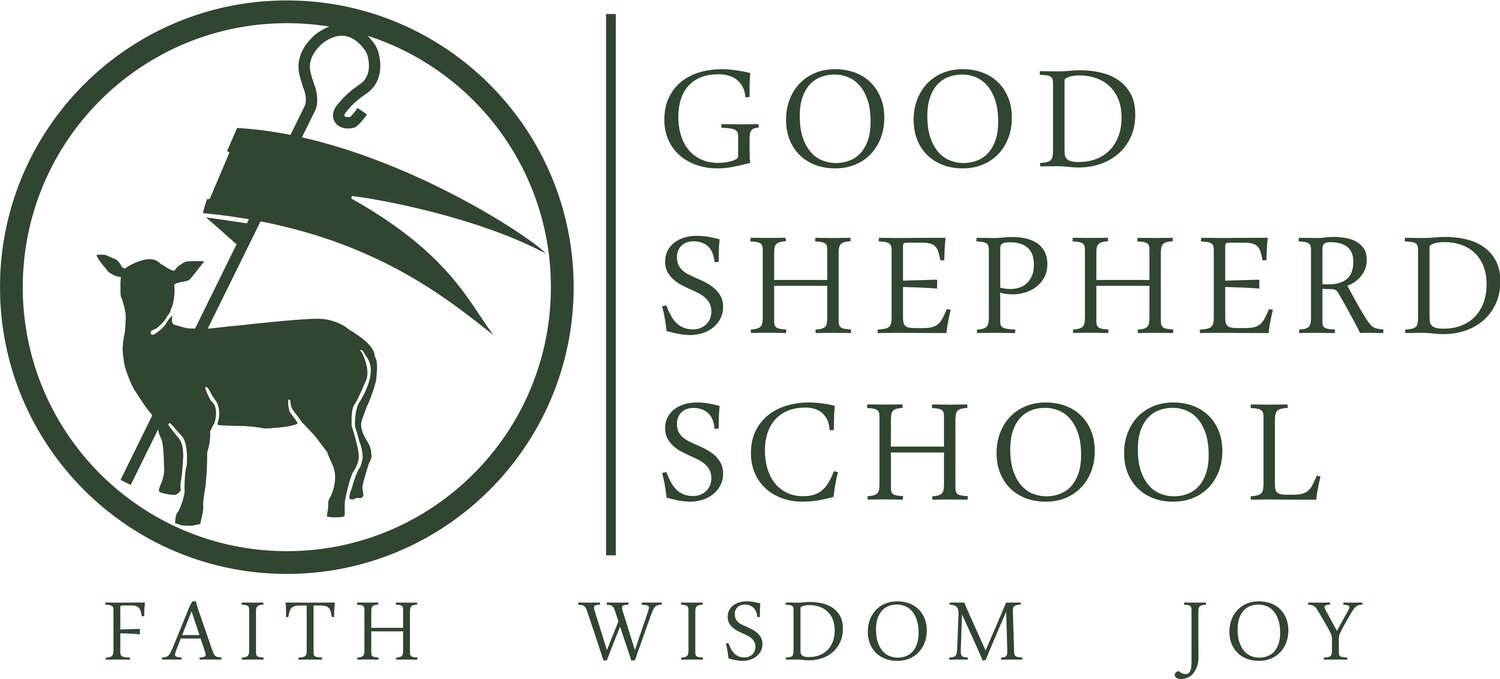Fifth & Sixth Grades
In the Fifth and Sixth Grades, the Grammar stage continues; but instead of focusing on broad, foundational knowledge, our focus shifts to deep knowledge. For instance, in science, students continue their encounter with natural wonder and beauty in Nature Study, but they also spend time in a focused study of matter, and earth science. History and literature are linked, and tell a coherent story of Western civilization. On a two-year cycle of Ancient and Medieval times, students read historical narratives alongside historical fiction, forming a backdrop of characters, scenes, clothing, and ideas from our forerunners.
Language Arts
Students in Fifth and Sixth Grades continue to hone their wordcraft through penmanship and spelling practice, but they also take a deep dive into the mechanics of language using Michael Clay Thompson’s grammar, vocabulary, and poetics curricula. Students learn the art of the sentence, paragraph, and essay as they master foundational principles of parts of speech, phrases, clauses, and coherence. They are also introduced to stylistic techniques and practices.
Fifth Grade
Paragraph Town by Michael Clay Thompson
Grammar Town by Michael Clay Thompson
Caesar’s English I by Michael Clay Thompson
Building Poems by Michael Clay Thompson
Sequential Spelling
Pentime Cursive 5, by Pentime Publishers
Sixth Grade
Essay Voyage by Michael Clay Thompson
Grammar Voyage by Michael Clay Thompson
Caesar’s English II by Michael Clay Thompson
A World of Poetryby Michael Clay Thompson
Sequential Spelling
Pentime Cursive 6, by Pentime Publishers
History & Literature
The story of Western Civilization is a rich and compelling one. In the combined History and Literature curriculum, formal history readings provide a scene while individual books of fiction provide characters, clothing, props, and dialogue. Together, the students gain a vision of the past. In addition to their readings in History and Literature, students also complete art projects, draw and label maps, learn geography, prepare feasts, and even perform short plays or puppet shows related to their year’s historical era.
Ancient Year
The Story of Civilization I: The Ancient World by Philip Campbell
Book of Greek Myths by Ingri and Edgar Parin d’Aulaire
Boy of the Pyramids by Ruth Fosdick
Gilgamesh the Hero by Geraldine McCaughrean
The Bronze Bow by Elizabeth George Speare
The Wanderings of Odysseus by Rosemary Sutcliff
Victory on the Walls by Frieda Clark Hyman
City of the Golden House by Madeleine Polland
Black Ships Before Troy by Rosemary Sutcliff
Medieval Year
The Story of Civilization II: The Medieval World by Philip Campbell
Book of Norse Myths by Ingri and Edgar Parin d’Aulaire
The Door in the Wall by Marguerite de Angeli
Adam of the Road by Elizabeth Janet Gray
Robin Hood by Roger Lancelyn Green
King Arthur by Roger Lancelyn Green
Tales from Shakespeare by Charles and Mary Lamb
Shakespeare Stories by Leon Garfield
Thomas Aquinas by Mary Fabian Windeatt
Joan of Arc by Susan Helen Wallace
Cinderella and Puss in Boots, Blue Fairy Book by Andrew Lang
Catechesis
Students continue to visit Joyful Child Atrium for their work with Catechesis of the Good Shepherd in the Level III Atrium. This level emphasises the unfolding mystery of God’s redeeming work in the universe as they ask the question “What is the kingdom of God and my place in it?”
Science
In the Upper Elementary years, students begin a more focused and formal study of Science, as they delve into the topics of general Physics, Matter, Earth Science and Biology, which are taught on a four-year cycle. Students build their thinking skills of inquiry: observation, questioning, reasoning and interpretation while developing a broad base of knowledge and understanding concerning scientific concepts and facts.
Nature Study
Students continue their weekly trips to a nearby park in order to adventure in the natural world. After a short lesson, they observe and collect specimens, take notes, sketch, and–perhaps–take a moment to splash in the creek. In Fifth and Sixth grades, we take a deep dive into nature journaling, recording the weather, our observations, diagrams, drawings and reflections. Although these times may be leisurely, they form both a first-hand knowledge of the immediate cosmos, but also the important habit of quiet, careful, and close observation. Finally, students are taught to reflect; they are afforded the time and space to simply contemplate and wonder in moments of quiet.
Math
Continuing in the Math Mammoth curriculum, in Fifth Grade, special focus is given to mastering fractions and decimals, including addition, subtraction, multiplication, and division of fractions. Students are introduced to large numbers and calculators, problem solving, bar models, graphing, and more advanced geometry. In Sixth Grade, students deepen their previously studied topics, but are also introduced to expressions and equations as they prepare for further algebraic studies.
Fine Arts
Art: Students study great works of art and architecture from the year’s historical time period. They participate in “Thinking Routines” when observing art. They also complete a focused artist study and create a reproduction of an important work. A selection of projects are done throughout the year that include a variety of media: paint, drawing, sculpture, clay, calligraphy, graphic arts and colored pencils.
Music: All students participate in the music program, as they learn musical notation and scales, and practice their voices on classical, folk and liturgical songs.
